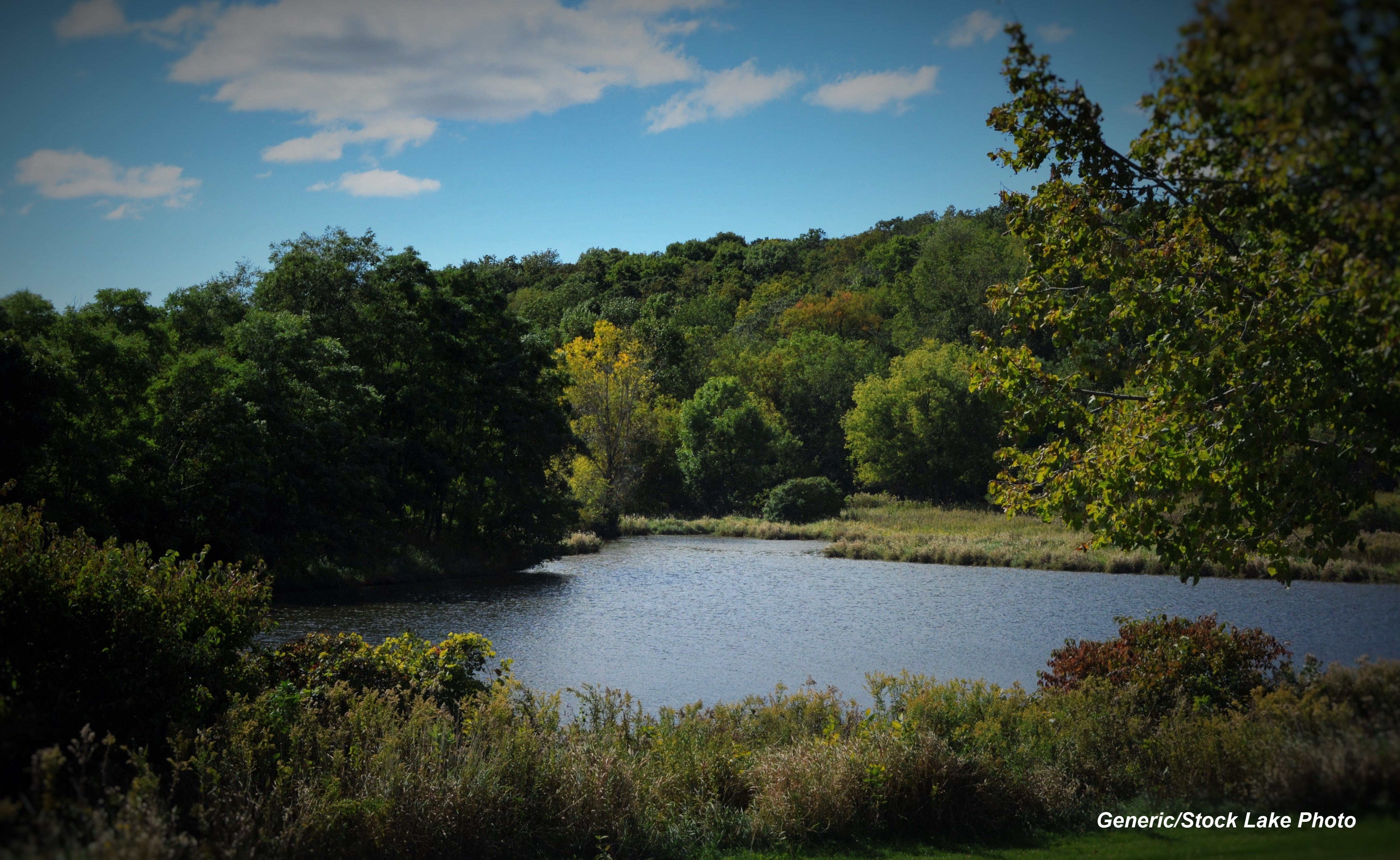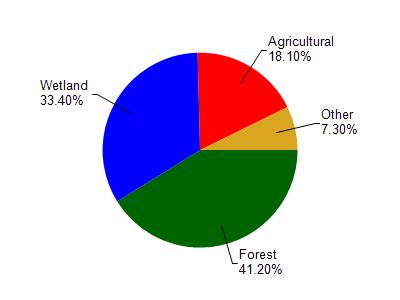
100.45 Acres
Deep Headwater
2025
Poor
Impairment Unknown, Excess Algal Growth
Total Phosphorus
Langlade
No
No
Yes
Fish and Aquatic Life
Overview
Dynamite Lake is a soft water drainage lake having slightly acid, clear water of low transparency. The shoreline is ,Predominantly upland (90%) of hardwoods and conifer with the remainder being wetland (10%) of conifer, shrub and bog. The littoral materials include sand (55%), gravel (15%), boulders (5%), muck (15%), and rubble (10%). Aquatic vegetation is sparse. The inlet and outlet streams are a part of the West Branch of the Eau Claire River. The fish population consists of northern pike, largemouth bass, perch, pumpkinseed, and white sucker. There is no public access or public frontage. There are no developments on shoreline.
Source: 1977, Surface Water Resources of Langlade County Dynamite Lake T-33-N, R-10-E, Sec. 5, Surface Acres = 97.4, Maximum Depth = 22 feet, Secchi Disk = 4 feet.
Date 1977
Author Aquatic Biologist
Impaired Waters
Dynamite Lake was evaluated in the 2022 cycle: phosphorus and chlorophyll levels were above listing thresholds as outlined in 2022 WisCALM. This lake was added to the 2022 Impaired Waters List.
Date 2022
Author Ashley Beranek
Condition
Wisconsin has over 84,000 miles of streams, 15,000 lakes and milllions of acres of wetlands. Assessing the condition of this vast amount of water is challenging. The state's water monitoring program uses a media-based, cross-program approach to analyze water condition. An updated monitoring strategy (2015-2020) is now available. Compliance with Clean Water Act fishable, swimmable standards are located in the Executive Summary of Water Condition in 2018. See also the 'monitoring and projects' tab.
Reports
Recommendations
Monitor Water Quality or Sediment
See TP data; TP clearly exceeds with 2017 and 2018 data, but one too few samples for usual protocol.
This is based on 3 of 4 samples being over the phosphorus impairment threshold in the past two years. The last sample in August of 2018 wasn't over the criteria. Chlorophyll is only over the threshold in one of three samples over the past two years.
Management Goals
Wisconsin's Water Quality Standards provide qualitative and quantitative goals for waters that are protective of Fishable, Swimmable conditions [Learn more]. Waters that do not meet water quality standards are considered impaired and restoration actions are planned and carried out until the water is once again fishable and swimmable
Management goals can include creation or implementation of a Total Maximum Daily Load analysis, a Nine Key Element Plan, or other restoration work, education and outreach and more. If specific recommendations exist for this water, they will be displayed below online.
Monitoring
Monitoring the condition of a river, stream, or lake includes gathering physical, chemical, biological, and habitat data. Comprehensive studies often gather all these parameters in great detail, while lighter assessment events will involve sampling physical, chemical and biological data such as macroinvertebrates. Aquatic macroinvertebrates and fish communities integrate watershed or catchment condition, providing great insight into overall ecosystem health. Chemical and habitat parameters tell researchers more about human induced problems including contaminated runoff, point source dischargers, or habitat issues that foster or limit the potential of aquatic communities to thrive in a given area. Wisconsin's Water Monitoring Strategy was recenty updated.
Grants and Management Projects
Monitoring Projects
| WBIC | Official Waterbody Name | Station ID | Station Name | Earliest Fieldwork Date | Latest Fieldwork Date | View Station | View Data |
|---|
| 1451700 | Dynamite Lake | 10020375 | Dynamite Lake -- Launch | | | Map | Data |
| 1451700 | Dynamite Lake | 10003237 | Dynamite Lake | 7/27/1999 | 7/7/2025 | Map | Data |
| 1451700 | Dynamite Lake | 343067 | Dynamite Lake - Deep Hole | 8/22/1984 | 8/4/2025 | Map | Data |
|

Watershed Characteristics
Dynamite Lake is located in the Upper Eau Claire River watershed which is 221.36 mi². Land use in the watershed is primarily forest (41.20%), wetland (33.40%) and a mix of agricultural (18.10%) and other uses (7.30%). This watershed has stream miles, lake acres and 40,234.77 wetland acres.
Nonpoint Source Characteristics
This watershed is ranked High for runoff impacts on streams, Low for runoff impacts on lakes and High for runoff impacts on groundwater and therefore has an overall rank of High. This value can be used in ranking the watershed or individual waterbodies for grant funding under state and county programs.However, all waters are affected by diffuse pollutant sources regardless of initial water quality. Applications for specific runoff projects under state or county grant programs may be pursued. For more information, go to surface water program grants.
Dynamite Lake is considered a Deep Headwater under the state's Natural Community Determinations.
Natural communities (stream and lake natural communities) represent model results and DNR staff valiation processes that confirm or update predicted conditions based on flow and temperature modeling from historic and current landscape features and related variables. Predicated flow and temperatures for waters are associated predicated fish assemblages (communities). Biologists evaluate the model results against current survey data to determine if the modeled results are corect and whether biological indicators show water quaity degradation. This analysis is a core component of the state's resource management framework. Wisconsin's Riverine Natural Communities.
Deep headwater lake describes the depth and location of the lake in a watershed. These variables affect the lakes response to watershed variables.